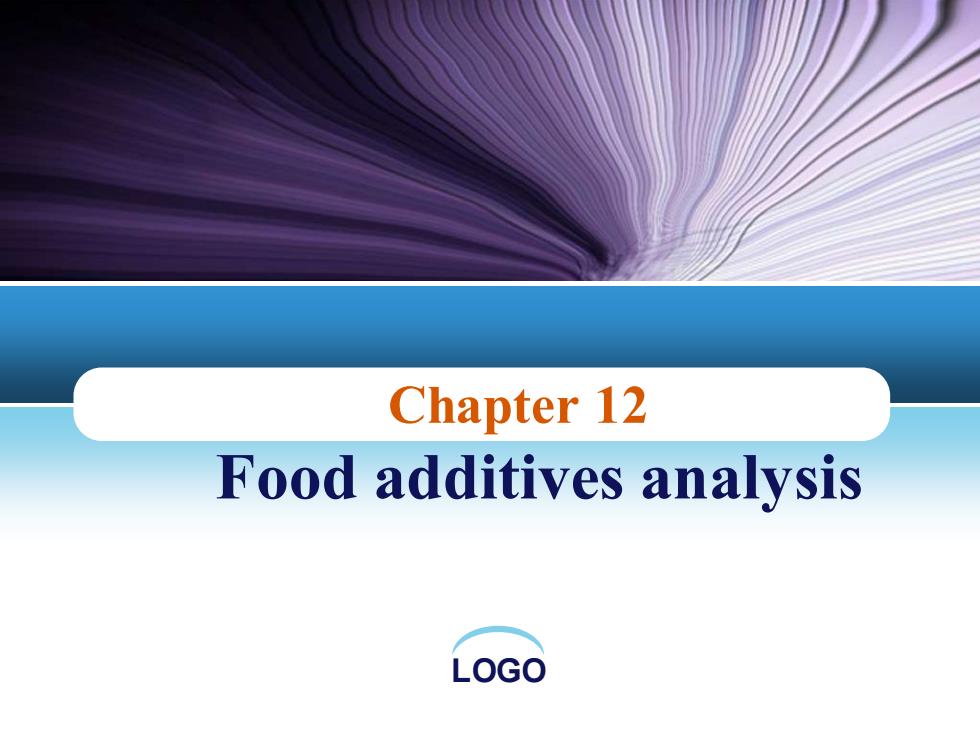
Chapter 12 Food additives analysis LOGO
LOGO Chapter 12 Food additives analysis
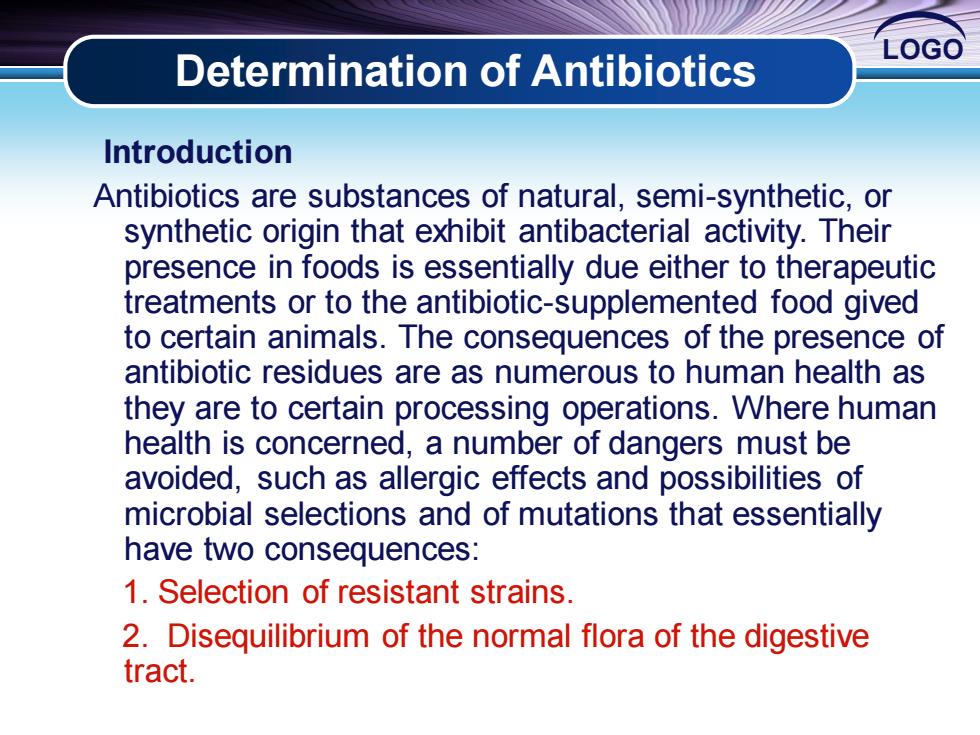
LOGO Determination of Antibiotics Introduction Antibiotics are substances of natural,semi-synthetic,or synthetic origin that exhibit antibacterial activity.Their presence in foods is essentially due either to therapeutic treatments or to the antibiotic-supplemented food gived to certain animals.The consequences of the presence of antibiotic residues are as numerous to human health as they are to certain processing operations.Where human health is concerned,a number of dangers must be avoided,such as allergic effects and possibilities of microbial selections and of mutations that essentially have two consequences: 1.Selection of resistant strains. 2.Disequilibrium of the normal flora of the digestive tract
LOGO Introduction Antibiotics are substances of natural, semi-synthetic, or synthetic origin that exhibit antibacterial activity. Their presence in foods is essentially due either to therapeutic treatments or to the antibiotic-supplemented food gived to certain animals. The consequences of the presence of antibiotic residues are as numerous to human health as they are to certain processing operations. Where human health is concerned, a number of dangers must be avoided, such as allergic effects and possibilities of microbial selections and of mutations that essentially have two consequences: 1. Selection of resistant strains. 2. Disequilibrium of the normal flora of the digestive tract. Determination of Antibiotics
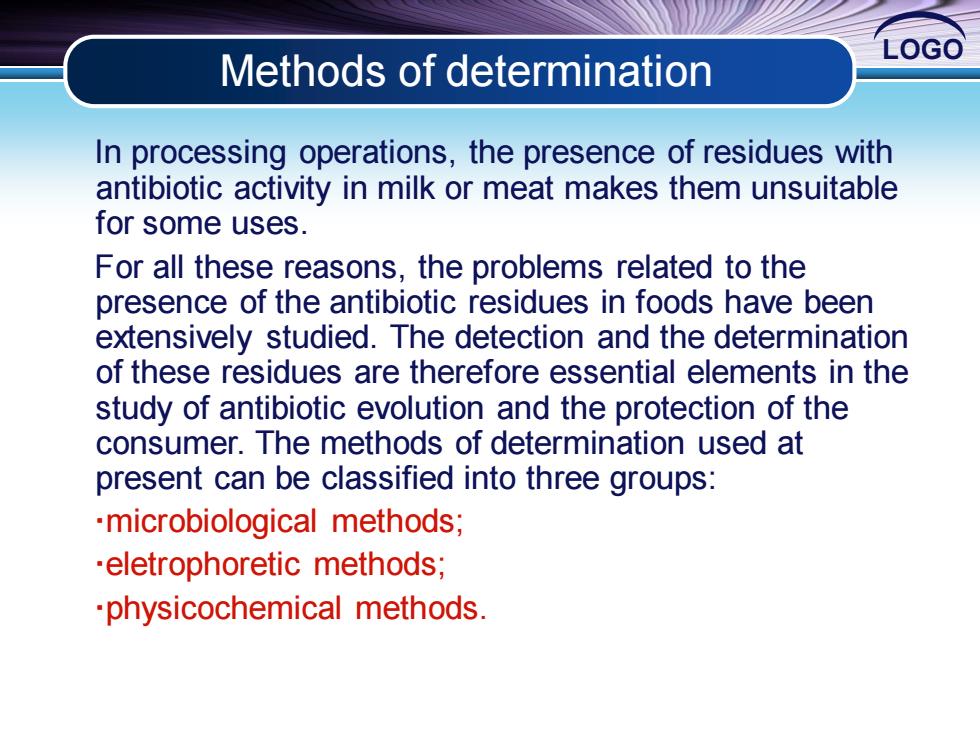
LOGO Methods of determination In processing operations,the presence of residues with antibiotic activity in milk or meat makes them unsuitable for some uses. For all these reasons,the problems related to the presence of the antibiotic residues in foods have been extensively studied.The detection and the determination of these residues are therefore essential elements in the study of antibiotic evolution and the protection of the consumer.The methods of determination used at present can be classified into three groups: .microbiological methods; eletrophoretic methods; physicochemical methods
LOGO Methods of determination In processing operations, the presence of residues with antibiotic activity in milk or meat makes them unsuitable for some uses. For all these reasons, the problems related to the presence of the antibiotic residues in foods have been extensively studied. The detection and the determination of these residues are therefore essential elements in the study of antibiotic evolution and the protection of the consumer. The methods of determination used at present can be classified into three groups: ·microbiological methods; ·eletrophoretic methods; ·physicochemical methods
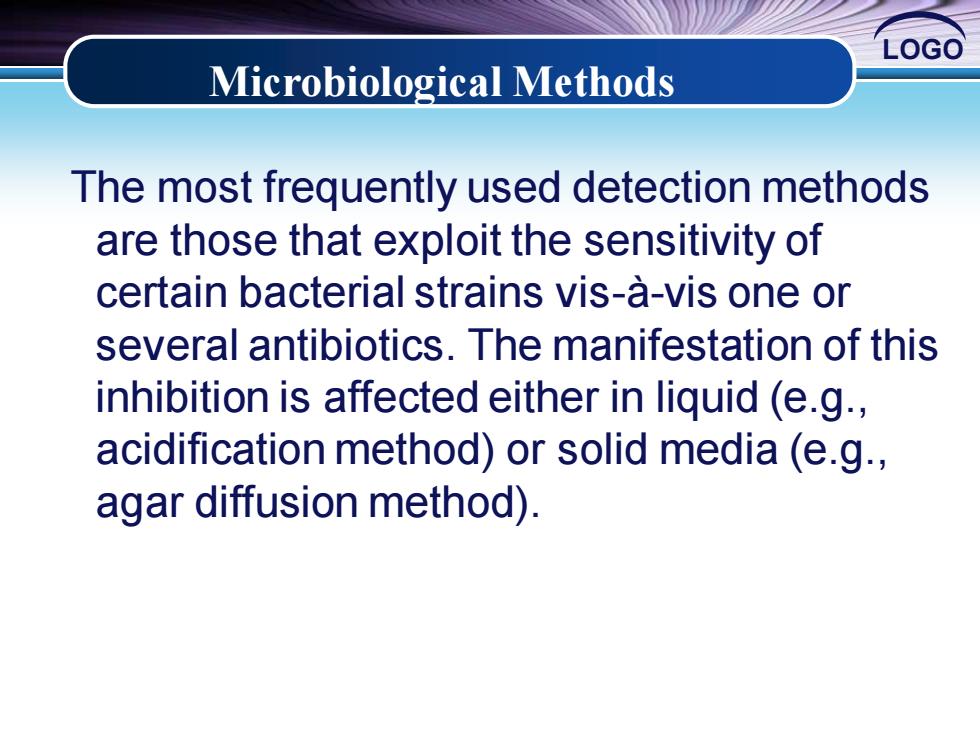
LOGO Microbiological Methods The most frequently used detection methods are those that exploit the sensitivity of certain bacterial strains vis-a-vis one or several antibiotics.The manifestation of this inhibition is affected either in liquid (e.g., acidification method)or solid media(e.g., agar diffusion method)
LOGO The most frequently used detection methods are those that exploit the sensitivity of certain bacterial strains vis-à-vis one or several antibiotics. The manifestation of this inhibition is affected either in liquid (e.g., acidification method) or solid media (e.g., agar diffusion method). Microbiological Methods
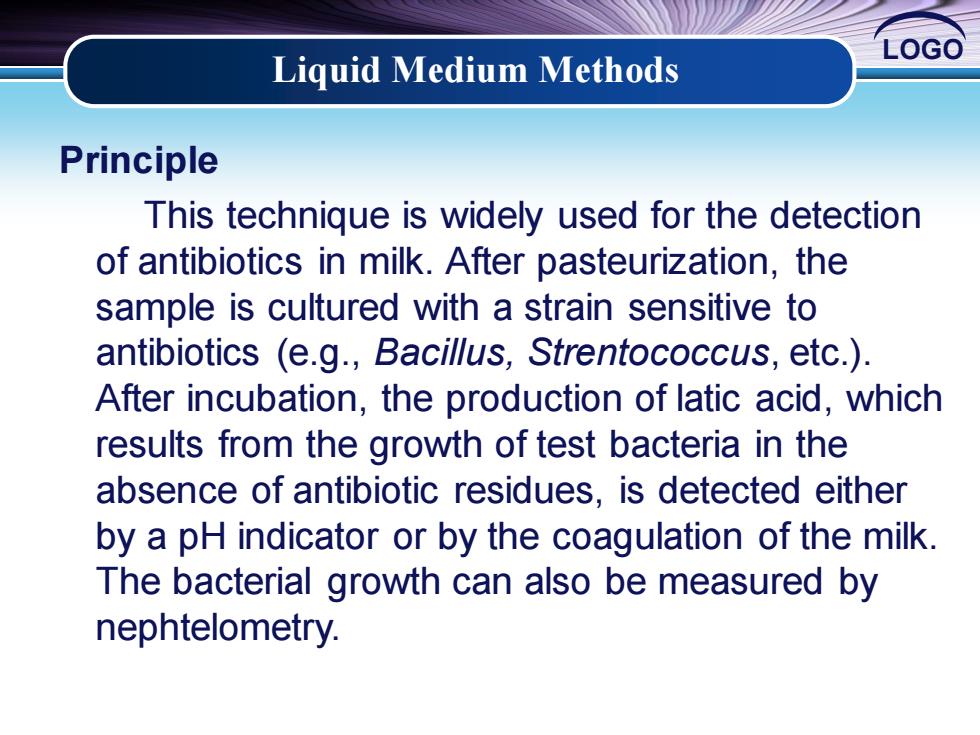
LOGO Liquid Medium Methods Principle This technique is widely used for the detection of antibiotics in milk.After pasteurization,the sample is cultured with a strain sensitive to antibiotics (e.g.,Bacillus,Strentococcus,etc.). After incubation,the production of latic acid,which results from the growth of test bacteria in the absence of antibiotic residues,is detected either by a pH indicator or by the coagulation of the milk. The bacterial growth can also be measured by nephtelometry
LOGO Principle This technique is widely used for the detection of antibiotics in milk. After pasteurization, the sample is cultured with a strain sensitive to antibiotics (e.g., Bacillus, Strentococcus, etc.). After incubation, the production of latic acid, which results from the growth of test bacteria in the absence of antibiotic residues, is detected either by a pH indicator or by the coagulation of the milk. The bacterial growth can also be measured by nephtelometry. Liquid Medium Methods